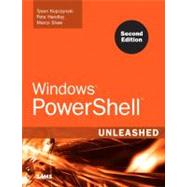
With more than nine years of experience in the information technology sector, Tyson Kopczynski has become a specialist in Active Directory, Group Policy, Windows scripting, Windows Rights Management Services, PKI, and information technology security practices. Tyson has been a contributing author for such books as Microsoft Internet Security and Acceleration (ISA) Server 2004 Unleashed and Microsoft Windows Server 2003 Unleashed (R2 Edition). In addition, he has written detailed technical papers and guides covering various in-the-field technologies he works with extensively. As a consultant at Convergent Computing (CCO), Tyson has been able to work with the next generation of Microsoft technologies since their inception and played a key role in expanding scripting and development practices at CCO. Tyson also holds the SANS Security Essentials Certification (GSEC), Microsoft Certified Systems Engineer (MCSE) Security certification, CompTIA Security+ certification, and SANS Certified Incident Handler (GCIH) certification.
Pete Handley has more than 15 years of experience in IT, including extensive knowledge of Active Directory, Microsoft Exchange, Novell GroupWise messaging, and Novell Directory Services. He has been a contributing author for Microsoft Exchange 2003 Unleashed, and Windows PowerShell Unleashed. Pete specializes in Visual Basic and PowerShell scripting and is a subject matter expert on the integration and migration of Novell technologies to Microsoft technologies. Pete holds the Microsoft Certified Systems Engineer 2003 (MCSE) certification, the Microsoft Certified Information Technology Professional (MCITP) certification, the Novell Certified Directory Engineer (CDE) certification, and the Certified Information Systems Security Professional (CISSP) certification.
Marco Shaw is an IT system analyst for a Canadian telecommunications company. He has been working in the IT industry for more than ten years, and he recently received a Microsoft Most Valuable Professional (MVP) award for his involvement in the Windows PowerShell community. He is the assistant community director of the new PowerShell Community Web site at http://www.powershellcommunity.org. His primary blog site is http://marcoshaw.blogspot.com. Marco holds a RedHat Certified Engineer (RHCE) certification, Microsoft Certified Professional (MCP) certification, and a bachelor of science degree from the Université de Moncton in New Brunswick, Canada.
| Introduction | p. 1 |
| Introduction to PowerShell | |
| Introduction to Shells | p. 7 |
| What Is a Shell? | p. 7 |
| Basic Shell Use | p. 8 |
| Basic Shell Scripts | p. 11 |
| A Shell History | p. 15 |
| Enter PowerShell | p. 16 |
| New Capabilities in PowerShell 2.0 CTP2 | p. 18 |
| Summary | p. 19 |
| Basic PowerShell Concepts | p. 21 |
| Getting Started | p. 21 |
| PowerShell 1.0.RTW | p. 22 |
| PowerShell 2.0.CTP2 | p. 23 |
| Before Installing PowerShell 2.0 CTP2 | p. 23 |
| Downloading and Installing PowerShell 2.0 | p. 25 |
| Understanding the Command-Line Interface (CLI) | p. 28 |
| Navigating the CLI | p. 30 |
| Tab Key Auto-Completion in PowerShell | p. 30 |
| Understanding Cmdlets | p. 32 |
| Common Parameters | p. 33 |
| Getting Help | p. 34 |
| Get-Help | p. 34 |
| Cmdlet Help Topics | p. 36 |
| Get-Command | p. 36 |
| Understanding Variables | p. 39 |
| Built-In Variables | p. 40 |
| Understanding Aliases | p. 42 |
| Discovering Alias Cmdlets | p. 43 |
| Creating Persistent Aliases | p. 44 |
| Creating Your First Script | p. 45 |
| Summary | p. 47 |
| Advanced PowerShell Concepts | p. 49 |
| Working with the .NET Framework | p. 51 |
| Using the New-Object Cmdlet | p. 53 |
| Understanding Assemblies | p. 54 |
| Understanding Reflection | p. 56 |
| Understanding the Pipeline | p. 59 |
| Powerful One-Liners | p. 63 |
| The Extended Type System (ETS) | p. 65 |
| Understanding the Add-Member Cmdlet | p. 67 |
| Understanding the types.ps1xml File | p. 68 |
| Working with Types | p. 68 |
| Type Accelerators | p. 71 |
| Summary | p. 72 |
| Other Key PowerShell Concepts | p. 73 |
| Formatting Output | p. 73 |
| The Formatting Cmdlets | |
| Table of Contents provided by Publisher. All Rights Reserved. |
The New copy of this book will include any supplemental materials advertised. Please check the title of the book to determine if it should include any access cards, study guides, lab manuals, CDs, etc.
The Used, Rental and eBook copies of this book are not guaranteed to include any supplemental materials. Typically, only the book itself is included. This is true even if the title states it includes any access cards, study guides, lab manuals, CDs, etc.